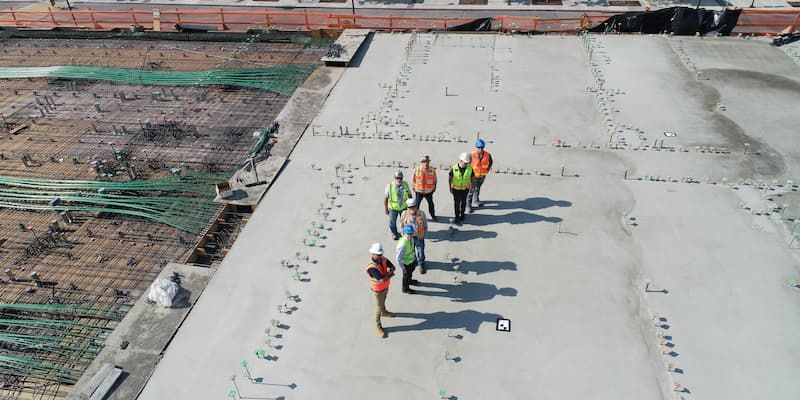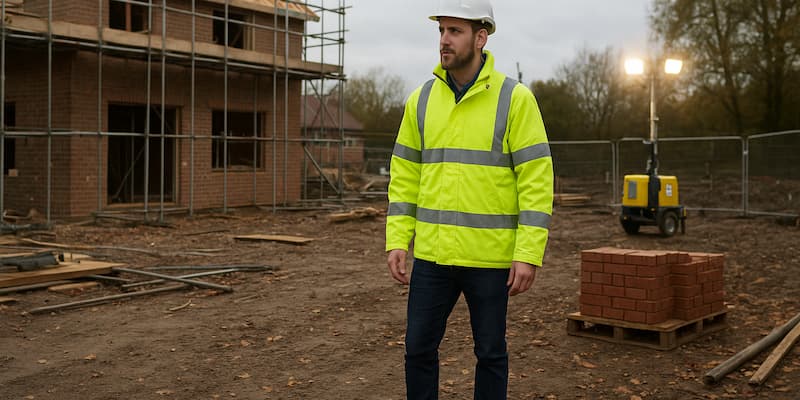
By Mark Smith 05/08/2024
Under: PPE and WorkwearExpert Guide to the significance of Hard Hat colour coding
Hard hats worn at construction sites in the UK must adhere to the safety standards set by BS EN 397, which involves thorough assessments for shock and impact resistance, and flame resistance, and includes UK markings. Please be aware that safety helmets purchased from different countries may not meet British standards or provide the necessary level of protection and are not permitted on construction sites in the UK.
Why are hard hats important?
Simply put, a hard hat or safety helmet can save your life! It is a vital piece of PPE designed to keep your head protected whilst working in hazardous environments. Enfield Safety has worked hard to source and supply a comprehensive range of the best protecting hard hats and safety helmets in the UK.
View head protection range
When should you wear a hard hat?
It’s necessary for workers and visitors at construction sites to wear hard hats or safety helmets if the site’s risk assessment indicates the possibility of potential head injuries. The only exception to this rule is for turban-wearing Sikhs under section 6 of the Deregulation Act 2015. In this situation, employers must ensure they implement appropriate safety measures to prevent injuries from falling objects.
If the site risk assessment does not however identify any risk of head injuries, hard hats and safety helmets are not mandatory. Bump caps may be sufficient in less hazardous environments.
What does each colour of a hard hat mean?
In 2017, BuildUK introduced a new colour-coding system for hard hats. Since then, construction sites have followed this colour code for all new and existing sites:
- White hard hats: should be worn by site managers, competent operatives, and vehicle marshals’.
- Black hard hats: should be worn by site supervisors.
- Orange: should be worn by slingers and signallers.
- Blue hard hats: should be worn by all other visitors to the site.
- Red hard hats: should be worn by the site’s fire marshall along with a red helmet sticker.
- Green hard hats: should be worn by the site’s first aiders along with a green helmet sticker
Today, the hard hat colour codes are widely recognised in the UK industry, making it easy to identify who is responsible for what and who is certified in different safety protocols.
.jpg)
What’s the difference between type 1 and type 2 hard hats?
Type 1: these helmets and hard hats are designed to lessen the impact of a blow to the head from above.
Type 2: these helmets and hard hats are designed to protect against an impact to the top and the side of the head.
What are the three classes of hard hats?
Class C (Conductive): these helmets and hard hats are designed for general protection and do not provide protection against electrical hazards. They may offer additional features like venting that are not found in helmets or hard hats meant for electrical protection.
Class G (General): these helmets and hard hats are designed to minimize the risk of coming into contact with low-voltage conductors and electrical hazards specifically for the head - they are tested to withstand 2,200 volts.
Class E (Electrical): these helmets and hard hats are designed to minimize the risk of contact with high voltage conductors and head hazards only—they’re tested to withstand 20,000 volts and are the best rating for hard hats.
How to pick the best hard hat for the job!
Make sure to choose a hard hat or safety helmet that suits the specific type and class required for the task at hand. It's important to prioritise safety by ensuring a secure fit. Look out for extra safety features like chin straps, eye protection and adjustable headbands!
If visibility is a concern, consider adding reflective striping or helmet band lights for dark or severe weather conditions. Opt for full peak on sunny days, short or no peak for working at height, and airflow-vented helmets for hot weather to stay comfortable and protected.
Remember to order extras such as hard hat sweatbands for extremely hot working environments and approved thermal beanies for cold weather. Hard hats with ear defenders are recommended for jobs that are particularly noisy.
Protect your head by purchasing trusted brands in the UK. Market leaders in safety such as JSP, Centurian and Portwest, all of which are supplied at Enfield Safety.
Do hard hats have an expiry date?
Yes, all hard hats and safety helmets have an expiry date. These dates can differ depending on the manufacturer, however, as a general guideline, there is a lifespan of up to five years from the date of manufacturing.
Enfield Safety mainly stock JSP safety helmets which have a combined shelf and useful life of 10 years. This means that helmets can be stored for up to 5 years in the appropriate storage conditions and can then be used for up to 5 years following, ensuring that the relevant inspection and maintenance are carried out.
It is however crucial to replace your hard hat promptly if it has been subjected to any noticeable impact or penetration.
Company branding and personalisation on hard hats
Enfield Safety offers the option to personalise your hard hats with your company logo or name. Get your head protection customised to your liking in 6 easy steps:
1) Select helmet – confirm where you want your logo printed and advise how many colours are in your logo.
2) Supply artwork – email your high-resolution logo over to our team.
3) Confirm order – place your order confirming the helmet code and colour.
4) Approve artwork proofs – inspect proofs with your branding.
5) Return proofs – sign, date and return proof via email or confirm amendments if required.
6) Helmet is delivered – delivery of branded hard hats will take place between 7-10 working days after approval of artwork.
For all your hard hat and PPE needs, please speak with our customer service team today.

.jpg)
